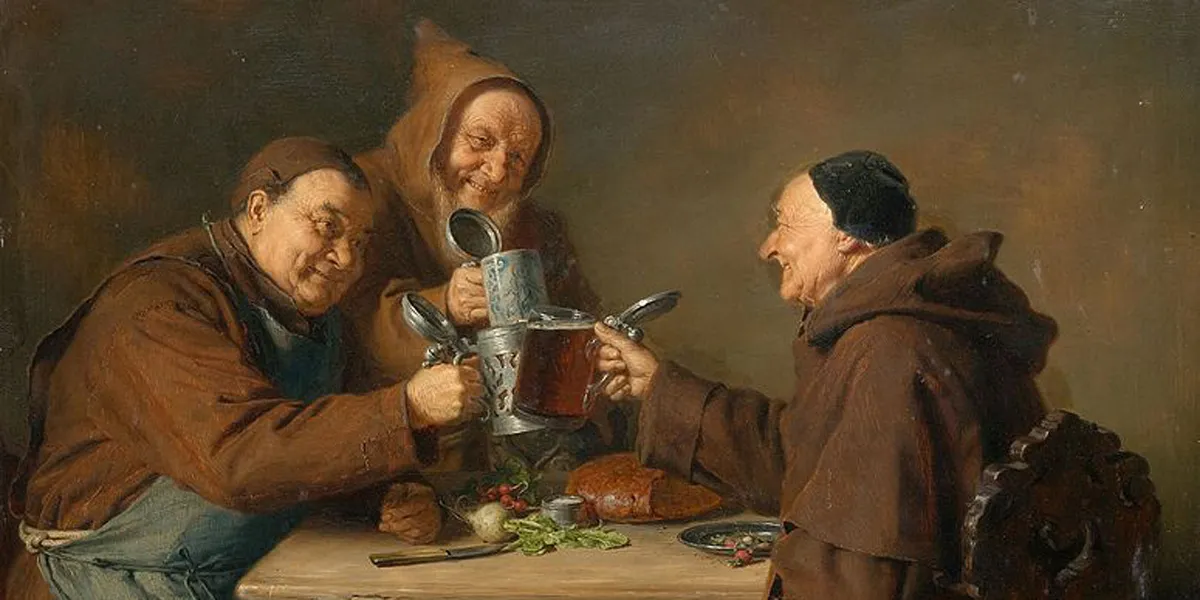What faded into history 200 years ago is now reborn, thanks to the monks of Grimbergen Abbey. Now, in the heart of Grimbergen, something special is brewing.
Table of Contents
ToggleHow It All Started
Back in the 17th century, monks at the Norbertine monastery crafted a tempting beer. It was considered healthier than water and even dubbed “liquid bread.” The monks could consume it while fasting as they were only allowed to drink but not eat anything. The monks brewed using a 12th-century recipe found in their library.
Later on, the valuable recipes were lost when French revolutionaries set the place on fire in 1978. This was the third time the abbey faced immense destruction, yet each time, the monks’ love for the place enabled them to successfully rebuild it.
For a long time, everyone thought that the heavenly drink was gone forever. Today, their revival incorporates ancient brewing methods in both Leuven and Grimbergen, where monks have now resumed the tradition.
Luckily, amidst all the chaos, the monks cleverly safeguarded their books that contained all the brewing secrets. By making a hole in the wall, they were able to shift 300 books to safety before they could catch fire.
What Was Inside The Books?
The books contained a comprehensive set of instructions like hop varieties, barrel and cask types, and even a catalog of beers brewed centuries ago. Mostly, the recipes were in Dutch and Latin.
Subprior of Grimbergen Abbey, Father Karel Stautemas, expressed his joy in discovering these hidden treasures. Recognizing the challenge of deciphering the centuries-old text, the monks took the help of external experts to interpret the ancient books.
In the 17th century, monks were already exploring ways to enhance the recipe, showing their commitment to continuous innovation. Every decade, they tweak their recipes a little bit.
The modern-day monks dedicated about 4-years to figuring out the entire method but in the end, they were able to create a unique Trappist beer that brought in connoisseurs from near and far. No doubt the new beer tasted so good as it was made using old methods with a blend of modern craftsmanship.
The Birth of New Limited-Edition Grimbergen Beer
Father Karel acknowledges that it doesn’t taste like the actual beer made in the 17th century. Monks of those times had a different taste palette, that’s why the beer would taste more like liquid bread or have a low flavor profile.
However, with modern brewing techniques in action, it transformed the centuries-old recipe into a powerful beer. The main idea was not to tamper with the yeast content but to focus on changing the aging method or adding different kinds of hops.
Even the mayor of the town recommends consuming 1 or 2 glasses of the drink as it contains 10.8% ABV.
In honor of the occasion, Grimbergen has introduced three captivating new brews: Grimbergen Magnum Opus Brut Beer, Grimbergen Ignis Quadruple, and Grimbergen Astrum Pale Ale.
The Abbey features an onsite bar and restaurant for beer enthusiasts to enjoy these amazing brews paired with mouth-watering cuisines.
The Abbey is Brewing Again
The Abbey Brewery is a collaborative work of the Carlsberg Group and Grimbergen Abbey, with Father Karl supervising the process. Brewing is a sacred practice for monks, offering a refreshing drink to many. The monks aim to follow Trappist beer-making traditions: brewing inside the abbey, managing the process themselves, and using the profits for the abbey’s upkeep and charity.

Father Karel manages both his monistic life and the Abbey Brewery, assisting Master Brewer Marc-Antoine Sochon, who played a big part in creating the new brewery. Together, they are making tasty beers using old and new methods, giving fans a taste of the unique and refreshing flavored brew that comes from Grimbergen Abbey.

I am a passionate beer connoisseur with a deep appreciation for the art and science of brewing. With years of experience tasting and evaluating various beers, I love to share my opinions and insights with others and I am always eager to engage in lively discussions about my favorite beverage.

















